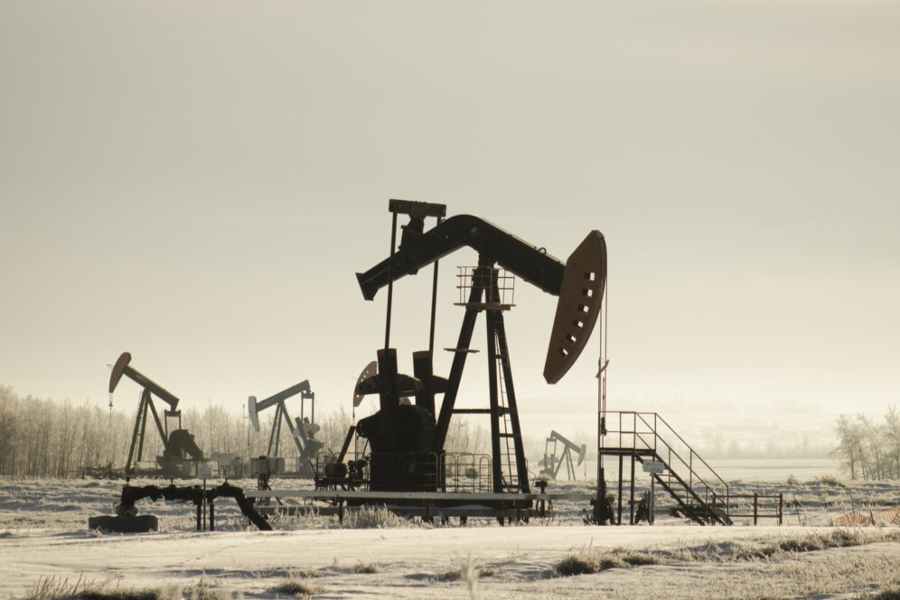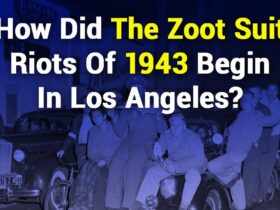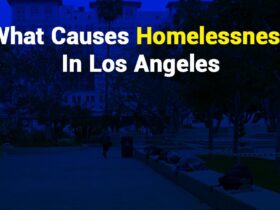If you’ve ever wondered, are there oil wells in Los Angeles, the answer might surprise you. While LA is better known for Hollywood, beaches, and traffic, it also sits atop one of the most productive oil basins in the United States. Oil has played a central role in shaping the city’s landscape, economy, and even its zoning laws.
Hidden behind office buildings, nestled in residential areas, and sometimes disguised as plain structures, oil wells exist throughout the city. Many residents drive past them daily without ever realizing they’re there. These urban oil operations—some active, others decommissioned—reflect a deep, complex relationship between industry, environment, and city planning.
This article explores everything you need to know about oil wells in Los Angeles: from their historical boom in the early 1900s to the ongoing debates about their safety, visibility, and regulation. We’ll examine where they’re located, how they impact health and real estate, and the future of oil extraction in a city that’s trying to balance growth with sustainability.
Whether you’re a local homeowner, environmental advocate, student, or just curious about LA’s underground secrets, this in-depth guide will provide clear answers. Let’s dig into the truth behind are there oil wells in Los Angeles and uncover how oil continues to shape the city’s identity—often in ways hidden in plain sight.
Are There Oil Wells in Los Angeles?
Yes, there are oil wells in Los Angeles—many of them hidden in plain sight. The city has over 1,000 active and idle wells, often located in urban neighborhoods, behind buildings, or camouflaged within city structures. These wells are a legacy of LA’s oil boom and continue to spark debate over health, safety, and land use.
The Surprising Truth Behind LA’s Hidden Urban Oil Fields
Most people envision Los Angeles as a city of palm trees, celebrities, and coastal luxury. However, beneath the surface lies a surprising truth: Los Angeles is built atop one of the most productive urban oil basins in the world. Beginning in the early 1900s, the city experienced an oil boom that rivaled California’s gold rush in economic significance. This rapid expansion led to the drilling of thousands of oil wells—many of which still operate today, often in the middle of residential and commercial zones.
Unlike traditional oil fields in remote areas, LA’s oil operations are remarkably concealed. Pump jacks are often housed in soundproof buildings, disguised as office towers or camouflaged behind fences. These visual and structural disguises were implemented as the city expanded and residents demanded more regulation and less industrial disruption.
Today, active oil fields like Wilmington, Inglewood, and Beverly Hills continue production, though they face growing scrutiny. Environmental and public health concerns have intensified, especially in low-income and minority communities near drilling sites. While LA promotes sustainability and clean energy, its oil legacy continues quietly. The presence of these urban oil wells reveals a complex contradiction—one where environmental progress coexists with a hidden, ongoing fossil fuel industry.
Where Are the Oil Wells Located in Los Angeles?
Major Urban Oil Fields Still Operating
Los Angeles is home to several active oil fields, including the Wilmington, Beverly Hills, and Inglewood fields. These sites continue to produce thousands of barrels of oil each year, often from locations that are densely populated and not traditionally associated with industrial activity. The scale of production in these zones is significant, especially given their proximity to schools, homes, and businesses.
Wells in Residential and Commercial Areas
One of the most surprising aspects of Los Angeles oil drilling is its integration into everyday neighborhoods. Numerous wells are positioned behind shopping centers or nestled within residential communities. In many cases, residents may be unaware of their presence due to how seamlessly they blend into the surrounding environment. Some wells are located just yards away from apartment buildings or schools, raising concerns about long-term exposure and safety.
Camouflaged Oil Infrastructure
To reduce visual impact and community opposition, many oil wells in Los Angeles are hidden in plain sight. Operators often disguise pump jacks and equipment inside structures that resemble office buildings or storage facilities. These camouflaged sites are especially common in upscale areas, where aesthetic standards are higher and public scrutiny is intense.
Legacy and Idle Wells
Beyond active drilling, Los Angeles has thousands of capped or idle wells scattered throughout the city. Though inactive, these wells still pose environmental risks, including methane leakage and soil contamination. Their presence complicates land use decisions and may affect future urban development.
Environmentally Sensitive Zones
Some wells are located in or near environmentally sensitive areas such as parks, fault lines, or protected green spaces. Their placement raises serious concerns about seismic risks and the potential for long-term ecological harm, especially in the event of leaks or ground movement.
Top Impacts of Oil Wells in Los Angeles Communities
The presence of oil wells in Los Angeles neighborhoods has significant consequences that extend well beyond energy production. These effects impact public health, property values, and environmental stability. Below are some of the most notable impacts felt by LA communities:
- Health Risks from Toxic Emissions: Residents living near active drilling sites often face increased exposure to harmful air pollutants. Studies have linked oil-related emissions to elevated rates of asthma, chronic headaches, nosebleeds, and other respiratory and neurological conditions.
- Noise and Light Pollution: Even when hidden or soundproofed, oil extraction equipment generates constant background noise. Night operations contribute to artificial light exposure, which can disrupt sleep and affect overall well-being.
- Declining Property Values: Homes located near oil wells frequently suffer from diminished market appeal. Potential buyers are often discouraged by health risks, environmental stigma, and perceived safety concerns, which can drive down home prices.
- Environmental Contamination: Oil spills, equipment leaks, and improper waste disposal can pollute groundwater and soil. Cleanup efforts are costly and time-consuming, while long-term ecological damage may be irreversible.
- Disproportionate Impact on Vulnerable Communities: Many oil wells are situated in low-income or predominantly minority neighborhoods. This raises serious environmental justice issues and amplifies existing inequalities in health and living conditions.
- Land Use and Zoning Challenges: Active and legacy wells can restrict how land is used or redeveloped. Zoning laws must account for underground infrastructure, limiting growth opportunities in impacted areas.
How Did Los Angeles Become an Urban Oil Powerhouse?
Los Angeles’ emergence as a major oil hub dates back to the late 1800s and early 1900s, when vast oil reserves were discovered beneath areas that would later become densely populated neighborhoods. The discovery of major fields such as the Los Angeles City Oil Field and Signal Hill ignited a boom that transformed LA into one of the nation’s top oil-producing cities. With little regulation at the time, oil derricks quickly filled residential and commercial zones, driving rapid industrial growth and attracting major energy companies.
As the city expanded, residents began voicing concerns over the visual and environmental impact of drilling. In response, zoning laws were introduced, and oil companies began concealing infrastructure within architectural facades to reduce public backlash. Despite increasing awareness of health risks and environmental damage, oil production continued throughout the 20th century.
Although LA is no longer a top national producer, it still hosts hundreds of active and idle wells. The city’s oil legacy remains deeply embedded in its policies, land use decisions, and environmental debates today.
Are There Oil Wells in Los Angeles? What You Didn’t Know
While many are aware that oil has played a historical role in shaping Los Angeles, fewer realize the extent to which it remains embedded in the city’s landscape and policies. Here are five surprising facts that reveal what most people don’t know about oil wells in LA:
- Hidden in Plain Sight Many oil wells throughout Los Angeles are cleverly disguised. Camouflaged behind office buildings or enclosed in soundproof towers, they often blend so seamlessly into the environment that even lifelong residents may pass them daily without knowing it.
- City vs. State Oversight Creates Confusion Some wells fall under city regulations, while others are governed by state agencies like CalGEM (California Geologic Energy Management Division). This dual jurisdiction can confuse accountability and enforcement, especially when residents raise concerns.
- Shutdowns Are Slowly Underway Due to increasing pressure from health advocates and environmental studies linking drilling to serious health issues, both LA County and the City of Los Angeles have started implementing plans to phase out certain oil operations. However, these changes are gradual and vary by location.
- Oil Still Generates Public Revenue Despite the controversies, oil production continues to generate millions in tax revenue for local governments. These funds help support public services, though critics argue the environmental cost outweighs the financial benefit.
- A Green Future Faces a Fossil Fuel Legacy As Los Angeles aims to become a leader in clean energy and environmental justice, the transition away from urban drilling remains a complex challenge. Balancing public health, economic interests, and sustainability is at the heart of the ongoing debate.
Final Remarks
The reality behind are there oil wells in Los Angeles is both surprising and revealing. Beneath the city’s modern skyline and eco-conscious reputation lies an active oil infrastructure woven into daily life. From hidden pump sites to disguised drilling operations, fossil fuel extraction quietly continues in one of America’s greenest cities. As concerns about environmental health and climate change intensify, Los Angeles faces a crossroads. Should it preserve this part of its industrial foundation or fully embrace a cleaner, oil-free future? The answer won’t come easily. The decisions made today by lawmakers, activists, and citizens will determine whether oil remains part of LA’s landscape—or becomes a fully retired chapter of its complex urban story.
FAQ’s
Q. Are there active oil wells in Los Angeles today?
A. Yes, Los Angeles is home to more than 1,000 active and idle oil wells. Many are located in densely populated urban areas, including residential neighborhoods and commercial districts.
Q. Are oil wells in LA dangerous?
A. Oil wells can pose serious health and environmental risks, especially when situated near homes, schools, or parks. Airborne pollutants and potential spills raise long-term safety concerns.
Q. Where are LA’s oil wells usually found?
A. Common drilling zones include Inglewood, Wilmington, and Beverly Hills. Some wells are hidden behind office buildings or masked within normal-looking city structures.
Q. Is the city phasing out oil production?
A. Yes, both the City and County of Los Angeles have begun gradually phasing out oil operations due to rising health risks and increasing pressure from environmental advocates.
Q. Why are oil wells hidden or disguised in LA?
A. To minimize visual impact and avoid public backlash, many wells are camouflaged with building facades or enclosed behind walls to blend with the surrounding infrastructure.





Leave a Reply